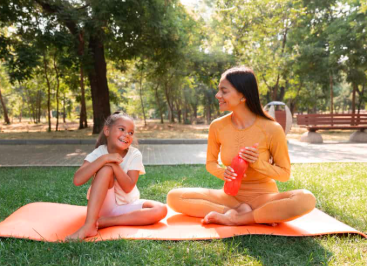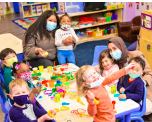In today’s busy world, even young children can feel overwhelmed. Preschoolers are full of energy and curiosity, but they also benefit from learning how to slow down and pay attention to the present moment. That’s where mindfulness comes in. Practicing simple mindfulness activities can help little ones build focus, emotional awareness, and a greater sense of calm.
What Is Mindfulness?
Mindfulness means noticing what’s happening right now — in your body, in your mind, and around you — without judgment. For preschoolers, this can be as simple as noticing how their feet feel on the floor or listening closely to the sound of a bird. Teaching mindfulness early can help children manage big feelings and develop important social-emotional skills.
Why Mindfulness Matters in Early Childhood
Young children are still learning how to recognize and express their emotions. Mindfulness supports this process by helping them pause, breathe, and respond calmly. It also supports attention, which is helpful for learning and getting along with others in the classroom.
Easy Mindfulness Activities for Preschoolers
1. Belly Breathing:
Have children lie down and place a small stuffed animal on their belly. As they breathe in and out slowly, they watch the animal rise and fall. This helps them notice their breath and feel relaxed.
2. Listening Game:
Ask children to close their eyes and listen carefully for sounds — like a ticking clock, a car outside, or birds chirping. Then, have them share what they heard. This builds focus and quiet observation.
3. Glitter Jar Calm-Down:
Create a simple “calm jar” with water, glitter, and glue in a clear bottle. When shaken, the glitter swirls, then slowly settles — just like our feelings. Watching the glitter helps children feel calm as they wait and breathe.
4. Mindful Movement:
Use gentle stretches or yoga poses with fun names like “starfish,” “tree,” or “butterfly.” These movements help children connect their bodies and minds in a peaceful way.
5. Feelings Check-In:
Use a feelings chart with pictures or colors to help children name how they feel each day. This encourages emotional awareness and helps them understand it’s okay to have all kinds of feelings.
Tips for Success
-
Keep activities short and simple.
-
Be consistent — practice at the same time each day if possible.
-
Use encouraging language and model mindfulness yourself.
-
Make it playful! Preschoolers learn best through fun and gentle repetition.
A Calmer Start to Life
Mindfulness doesn’t require a quiet room or long meditations. It’s about helping young children notice the world around them, understand their emotions, and find simple ways to feel safe and grounded. By introducing these small practices now, we support healthier, more balanced growth that lasts well into the future.


